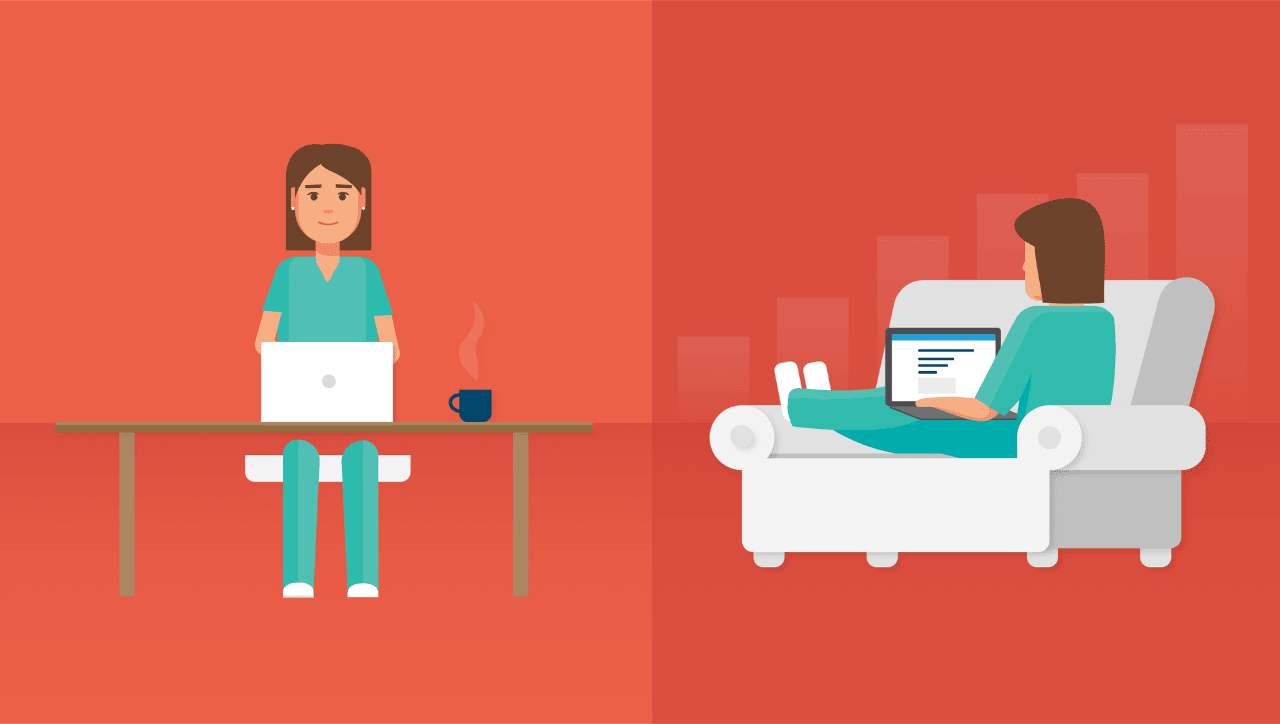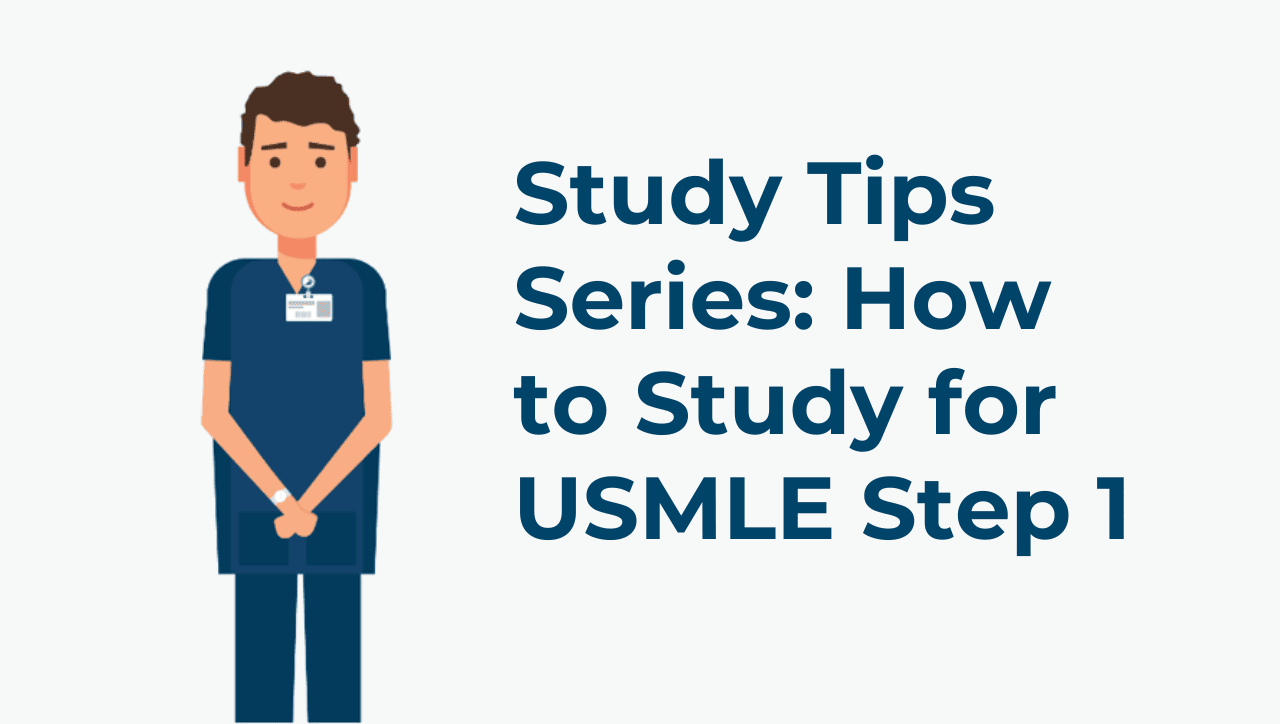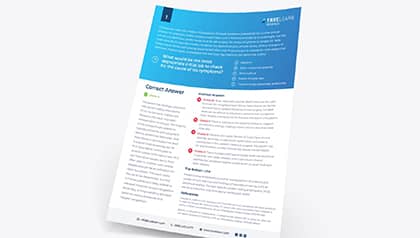How to Study for the USMLE Step 1
Exams can be a big stressor in any medical student’s life. Not only because of the stress exam day can bring, but also from figuring out how to study for USMLE Step 1. Here are some tips to get you organized and ready for your big day.
1. Start by Selecting Your Exam Date
The very first step on a successful USMLE Step 1 journey is to do some research on the best time to take the exam. Choosing your test date is vital to make sure you have enough time to study, that your scores will come back in time, and that your test experience goes as smoothly as possible.
You will need to apply to take the exam, which you can do on the USMLE website. For students outside of the US, you may need to apply through a separate portal with the ECFMG (Education Council on Foreign Medical Graduates). Make sure you leave enough time for the application to process so that the dates in your testing window don’t fill up before you get a chance to snag that perfect appointment.
Once you apply, and get your scheduling permit, you’ll be able to select a date. Check with your medical school to make sure your chosen test date fits their requirements. Some schools will require that you have your score report available prior to moving on to your clinical clerkships (typically the summer after your second year, but varies from school to school), so make sure to check the USMLE website to ensure your scores will come back in time. Typically your results take about a month to come back.
Make sure you’ve planned enough time to study (see below for a sample study plan). Most medical school schedules will give you some “dedicated” time without classes or academic responsibilities, in order to study for the exam—typically between six and eight weeks. It might be tempting to see the large gap in your academic schedule and start putting together vacation plans, but make sure you have enough time set aside to prepare. Studying for the test should be your full-time job during your dedicated period! You should plan on setting aside a minimum of six to eight hours a day for review.
2. Make Your Study Plan
There are many resources online that will try to sell you on a specific study plan for the USMLE Step 1, but the best way to structure your learning is to come up with something that works for you and your schedule. By making your own hours, you will be more likely to stick to your chosen plan.
Sample USMLE Step 1 Study Plan
It’s important to use a variety of resources, while still keeping things simple so that you don’t become overwhelmed or overworked. A good study plan should keep things centrally organized. In the case of the plan below, a review book (First Aid for the USMLE Step 1) was used to come up with the topics for each week of study.
Each morning, dedicate three to four hours to didactic learning using videos to review the subject matter at hand. There are a number of paid sources for online medical education videos. If you’re working on a budget, there are also many great medical education videos available on YouTube at no cost.
Remember that self-care can be as important to your success as studying, and will continue to be vital throughout your career in healthcare. Make sure to take a long lunch, relax, and eat well before getting back to studying.
The afternoons are where the real learning happens. Plan to do four blocks of questions each day, focusing on the topic areas listed for each week. Using tutor mode on the SmartBank is a great way to help you gain a deeper understanding of the concepts behind the questions, and don’t forget to check out the “Bottom Line.” The TrueLearn SmartBank will even send you text message reminders—at space-out intervals—to reinforce and re-expose you to material you get wrong. Remember that a wrong answer is the best opportunity to learn!
Fridays are a different story. In addition to learning, it’s important to simulate the testing experience as frequently as possible. On Friday morning, find a quiet place to study, and get ready to do four blocks of timed questions using all available topics. In the first few weeks of the study schedule, this means that you’ll be exposed to some questions you might not be so prepared for. This is excellent practice for test day, since you will undoubtedly get a few surprises from the USMLE Step 1. As you move forward in the schedule, doing a very general test gives you the chance to practice the things you learned early on so that you stay sharp on test day!
Take the afternoon to read the answer explanations for the items you got wrong. This can be valuable time to go back and review concepts you might not have grasped completely.
| Week | Topic | Time of Day | Monday – Thursday | Friday |
| 1 | Biochem/Biostats | AM | Didactic Learning | 4 Blocks (All) |
| PM | TL (Specialty and Interdisciplinary Areas): Biochem/Mol/Genetics, Statistics/Epidemiology, Genetics, Molecular and Cell Biology | Review Incorrect | ||
| Immunology | AM | Didactic Learning | 4 Blocks (All) | |
| PM | TL (Specialty and Interdisciplinary Areas): Immunology/ Rheumatology, Immunology, Aging | Review Incorrect | ||
| 2 | Microbiology | AM | Didactic Learning | 4 Blocks (All) |
| PM | TL (Specialty): Microbiology, Pharmacology | Review Incorrect | ||
| 3 | Cardio | AM | Didactic Learning | 4 Blocks (All) |
| PM | TL (Specialty): Cardiovascular | Review Incorrect | ||
| 4 | Endocrine | AM | Didactic Learning | 4 Blocks (All) |
| PM | TL (Specialty): Endocrine | Review Incorrect | ||
| 5 | GI | AM | Didactic Learning | 4 Blocks (All) |
| PM | TL (Specialty and Interdisciplinary Areas): Gastrointestinal, Nutrition | Review Incorrect | ||
| 6 | Heme-One | AM | Didactic Learning | 4 Blocks (All) |
| PM | TL (Specialty): Heme-One | Review Incorrect | ||
| MSK | AM | Didactic Learning | 4 Blocks (All) | |
| PM | TL (Specialty): Musculoskeletal, Dermatology, Immunology/Rheumatology | Review Incorrect | ||
| 7 | Neuro/Psych | AM | Didactic Learning | 4 Blocks (All) |
| PM | TL (Specialty): Behavioral Sciences, Medical Ethics, Neurology | Review Incorrect | ||
| Renal | AM | Didactic Learning | 4 Blocks (All) | |
| PM | TL (Specialty): Renal, Physiology | Review Incorrect | ||
| 8 | Reproductive/ Respiratory | AM | Didactic Learning | 4 Blocks (All) |
| PM | TL (Specialty): Reproductive, Respiratory, Embryology | Review Incorrect |
3. Use Practice Questions to Identify Strengths and Weaknesses
One of the best ways to study is to use a question bank to help identify your personal areas of strength and weakness academically, and then target those for extra study. Scientific studies have proven that the best way to learn is to harness the “testing effect” to reinforce learning from other sources.1,2 The “testing effect” refers to the process of learning through repeated assessment. Taking multiple practice tests (typically using a test-specific question bank) can result in greater gain in meaningful learning than reading textbooks or listening to lectures.
The TrueLearn USMLE Step 1 question bank can help you plan out how to best invest your time. One good way to determine where you need to focus is to take a practice test that simulates the environment and content of the real test. This should be shorter than the actual USMLE Step 1, but contain a mix of items that are roughly representative of what will be tested.
Once you take the practice test, figure out which subject areas were the most challenging—and structure your studying to address these. Below you can find an example framework for a study schedule. The strengths of this schedule include a high emphasis on review as well as providing sufficient exam practice.
4. Take Timed Assessments
One tip to increase efficiency is to read the final sentence of the question and skim the possible answers first. This helps you zero in on key details in the question stem and prevent wasting time on distractor information.
Using tutor mode can be very helpful to give you fast feedback on your answer. Don’t forget to read through the incorrect answer explanations, even if you had chosen the right answer. Often, there are important distinctions to uncover, which can help you avoid picking the wrong answer on the test.
Don’t be afraid to retake old questions. The more you are exposed to a piece of information, especially one you had difficulty with initially, the more you will be familiar and comfortable with the topic on test day! The TrueLearn SmartBank will even send you text messages on topics you got wrong—a great way to reinforce the right answers.
What to Do on the Day of the Step 1 Exam
You’ve made it! Make sure you read the test center instructions carefully to ensure that you have a smooth experience. Specifically, make sure you are aware of the test center policies on signing in so you can have plenty of time to register. Ensure that you bring everything required to avoid any issues (typically you will need your scheduling permit for the exam and a picture ID). Make sure to leave time for breakfast (and coffee!) and leave plenty of time to get to the testing center. Bring lunch, water, and snacks.
It’s important to take breaks during the exam to prevent becoming burnt-out and inattentive. Try to space out your breaks so that you never have more than two question blocks in a row.
Written By: Aaron Kangas-Dick, MD, Resident Physician, Maimonides Medical Center, Brooklyn, NY
Try TrueLearn’s USMLE Step 1 SmartBank for free!
5-Day Free TrialReferences
- Smith AM, Floerke VA, Thomas AK. Retrieval practice protects memory against acute stress. Science. 2016;354(6315):1046-1048.
- Karpicke JD, Blunt JR. Retrieval practice produces more learning than elaborative studying with concept mapping. Science. 2011;331(6018):772-775.


